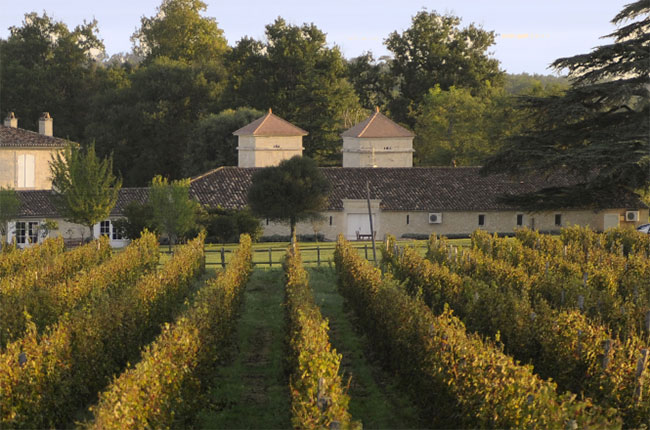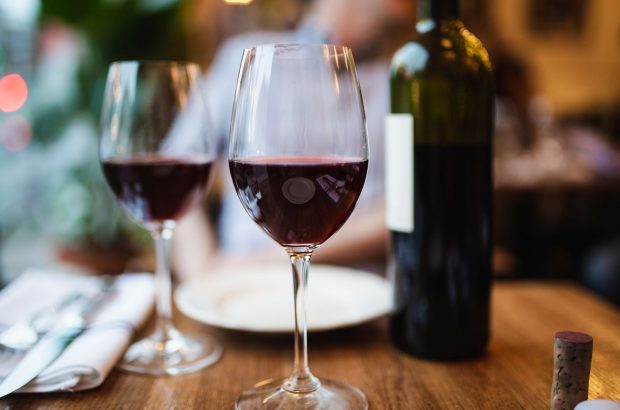Jane Anson explores Corsica's native grape varieties with the help of local winery owner Jean-Charles Abbatucci and finds the islands is one of the most exciting places to drink wine in France.
Exploring wines in Corsica: A brief guide
Corsica is a feast of indigenous grapes. It has some of the most distinctive varieties of any territory in France – including at a brief glance: Nielluciu, Vermentinu, Sciaccarellu, Codivarta, Aléatico, Barbarossa, Montanaccia, Rossol, Brandica, Riminese, Morescone, Rugughonna, Licronaxu Nero, Scimiscia, Biancu Gentile, Genovese and Carcaghjolu.
We can thank Jean-Charles Abbatucci’s father Antoine for the fact that many of them survive. From 1960 onwards, he began travelling the island, talking to farmers and taking cuttings from wild grape vines they had growing in abandoned spaces, curling up around ancient trees, in forgotten corners of their farms.
France’s national appellation body refers to Corsica as a land of ‘legends and magic’
Abbatucci has carried on the task at Domaine Comte Abbatucci, presiding over his conservatory of 18 red and white varieties and, among other things, grafting these ancient varieties onto rootstocks of more typical ‘mainland France’ vines such as Carignan, Cinsault and Grenache that his father planted in the 1950s, like many others in the years after French colonial rule in North Africa ended and a wave of migrants arrived in Corsica. The recent grafting is his way, essentially, of sweeping out the new to replace with the old.
‘The age of the vines is crucial for wine quality’, he says. ‘Older ones really do make a difference to the final taste in the glass. So I keep any old roots for grafting onto.’
France’s official wine appellation body the INAO (Institute National de l’Origine et de la Qualité) clearly recognises how special Corsica is. The official document on the appellation rules describes the territory rather poetically as a land of ‘history but also of legends and magic’.
Yet the island’s main appellation, AOC Corse, states that the white wines must be made up of a minimum of 75% Vermentinu (Vermentino in the local dialect) and the reds 50% minimum of Nielluccio (genetically identical to Sangiovese but given a completely different spin in these soils) and Sciaccarello (known here as Corsican pinot noir).
It is this that persuaded Abbatucci to renounce the AOC and bottle his wines as Vin de France.
‘I’m not against the idea of appellations. I represented Corsica at the INAO and fought for the old Corsican varieties to be included in the AOC, but then I began to be worried by the lack of respect and consideration for them’. He was particularly outraged by the terms of the AOC that state no more than 10% of the blend can come from Biancu Genile, Codivarta and Genovese for the whites, and no more than 10% of Aléatico, Carcajolo Nero and Minustello for the reds
‘At first I didn’t leave completely, I just began the Cuvée Collection of old varieties and bottled them as Vin de France. But five years ago I decided the system was just too restrictive, too limited. We are in a time where agriculture is disappearing and we need to support the traditions that make us who we are’.
But it is not politics that makes Abbatucci such an interesting winemaker. It’s not even that he has been working biodynamically for the past 17 years, since 2000, and that he has got to such a level of renown for it that he has become something of a pilgrimage site for other biodynamic farmers.
Instead, it is perhaps his quality of restlessness that makes the difference.
‘I am someone who does a lot of observation,’ he says. ‘I am not a scientist, I don’t have grand diplomas, but when I look around me, I see plants growing wild, the Barbary fig trees of Corsica producing vast quantities of fruit without being watered and yet suffering no stress, and I realise it is because man doesn’t get involved’.
‘I am interested in knowing how the ancients worked. In Corsica we have 2,500 years of history of making wine, so there must have been successful winegrowing techniques. There were vines everywhere at one point, and I am interested in knowing why and how they coped’.
Alongside the headline-generating experiments such as bringing traditional Corsican singers into the vineyards to serenade his plants are a host of smaller trials. One of the most interesting is his work with sea water.
‘We have the maritime influence in Ajaccio,’ he says, ‘with the influence of the salty air, and I wanted to enhance its benefits. Over the past few years I have treated on plot of vines with ocean water that has been dynamised using biodynamic techniques. No other treatments at all – no sulphur, no copper, nothing – except for 200 litres of dynamised sea water, taken and applied to 15 year old vines that have only ever been treated biodynamically. The vines remained entirely healthy throughout, better than the neighbouring plots, and I am extending the treatment this year’.

Rows of Domaine Comte Abbatucci vines in Corsica. Credit: Paul Cruells / Abbatucci
I am convinced that this is right now among the most exciting wine destinations in France
Next up is planting a new estate in partnership with his technical director and friend Emmanual Gagnepain, even closer to the sea, right in the middle of the Corsican maquis (scrubland) on totally virgin land. ‘We are only planting one hectare this year, with old Corsican varieties, but expect to be up to 10 hectares over the next few years. The site is at 650 metres above sea level, unlike our own vineyard in the Taravo valley, so will capture even more the essential freshness from our island location. This is the magic of Corsica, and our great luck’.
The more I taste from Corsica, the more convinced I am that this is right now among the most exciting wine destinations in France. Winemakers here still sell the vast majority of their production in the summer months (some estimates put it as high as 80%) to tourists, but something essential has shifted in recent years. Clos Canarelli, Domaine de Vaccelli, Domaine de Pieretti, Yves Leccia, Clos Venturi, these are brilliant wines that give a jolt to the system.
Abbatucci is clear as to why. ‘I stay true to my word for my vines and my wines. I don’t cheat. There is a place for everyone, but I have my own place and will defend it’.
Domaine Comte Abatucci cuvée Collection Général de la Révolution 2014 Vin de France
A blend of Biancone, Carcajolo Bianco, Paga Debbiti, Riminese, Rossola Brandinca and Vermentinu grown on granite slopes. Extremely pale straw in colour, making the punch of flavour on the attack a brilliant surprise. This is rich and creamy with citrus, pear and garrigue spices and yet pulls up immediately with a beautiful seam of acidity that leaves the palate as dry as a bone. Aged in large sized oak barrels of 600 litres, no new oak. 13% abv. 93 points / 100
Jane Anson is currently writing a book on biodynamic wine.
More Jane Anson columns on Decanter.com:

Anson on Thursday: Bordeaux 2007, Ten Years On
Jane Anson finds out how the Bordeaux 2007s are tasting...

Bordeaux 2006 wines to drink now – Jane Anson
Jane Anson picks six Bordeaux from the 2006 vintage to drink now...

Will Chinese law change hurt vineyard purchases?
Jane Anson weighs up the global market amid new rules...

Anson: A new California ‘grand cru’ in the making?





